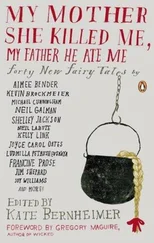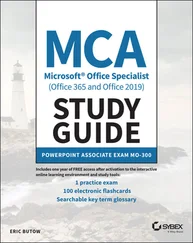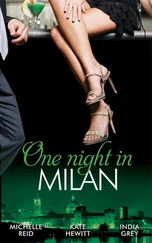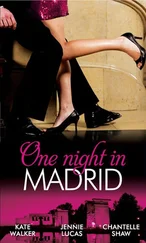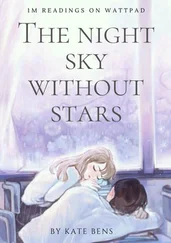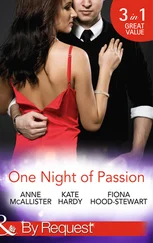
“Wait, what?” says the Frame.
“It’s romance, we’re in romance now,” says the Canvas.
“Where’s the guy with the gun? Where’s Hester’s brother?” says the Pigment.
“Isn’t anyone going to come in and throw Chelikowsky out the window?” says the Frame.
“We’re in romance?” says the Canvas.
“Romance,” says the Pigment.
“Ain’t it all strange?”
“Yes.”
“So strange.”

And they dance. It’s ridiculous, really — a slow-motion dance — it’s not a good dance. It’s awkward. She doesn’t pick up the paper. She ignores it. She walks over to him and places her hands on his shoulders and starts to move them down the sleeves of his jacket. And he sits very still. He is like a scared rabbit. He even looks like a rabbit. Like a giant man-rabbit. Like a child or father. He must not think that, he thinks; he empties his mind of all but the music and her hands upon him, upon his nervous night body. He needs this more than he knew.

He signs all his letters to Hester “Confidentially Yours.” That’s how he signs all his letters, but especially hers. Why does he sign the letters to Hester “Confidentially Yours”?
Because he hurt her.

In the back room of Mon Fong Won Co., Hester Chan lies on a table. She is stretched out on a white sheet, and she wears a beautiful pair of silk Chinese pajamas: a deep shade of blue. The phonograph plays “Mean Old World” over and over. T-Bone Walker is Hester Chan’s favorite musician. Someday someday darling I’ll be six feet in my grave . . as the needles warm her whole body, as the needles calm her startled condition, Hester enters a dream. Or is it not a dream? Nobody knows. And isn’t that the whole problem, that nobody knows whether or not life is a dream? If we knew, we wouldn’t be afraid of dying, would we? If life is a dream nothing is real — not even the pictures we see with our mind. But if life is a dream, then is there even a mind? Are we someone else’s dream, maybe? What Hester Chan’s brother told her when they were kids: that he controlled her every movement. That she was his. That she was his servant. That she was his love. That she was his soldier. That she was his robot. That she worked for him. He is the one who puts in the needles. He has a gift. Everything that he does is illegal. In the back room of Mon Fong Won Co., on a Saturday morning, there is no direct light coming in; it’s a closet, curtained by velvet — dark blue. A small sliver of light sneaks in under its edges, washes the floor, slides up the blue silk of her pajamas, and reaches her face — gives her complexion a ghost’s chilly color. But she isn’t dead, she is only dreaming she is. Or is it a vision? The needles are supposed to calm down the dread; her mother suggested the treatment. Her mother told her to let her brother do it. It’s the best thing Hester could have imagined. Her complexion glowing in blue, the record turning around and around with a soft whir — and those strong, lyrical sounds floating toward her — and her brother’s cigarette smoke, wafting in: Mon Fong Won Co., Saturday morning. The Office of Unconsummated Desire is far, far from her mind. Hester Chan knows she must go back to work the day after tomorrow. Why is Hester Chan so afraid?

“Wait, what?” Hester says.
“This is romance,” he answers.
“But it doesn’t feel right.”
“So why don’t you throw yourself out the window?”
“Wait, this is romance?”
“Romance,” Marge chimes, from her post at the files.
“Yes, romance,” he says, at the desk.
“So strange,” Hester murmurs. “I don’t feel like I’m even here anymore.”
An Interview with the Authors
Traditionally, curatorial institutions like the Walker Art Center and Coffee House Press are viewed as tastemakers presenting “great art” to audiences. Walker Art Center Education Director Sarah Schultz and her colleagues, as well as my colleagues at Coffee House, have been striving to subvert that dynamic. With much of our new programming, we seek to create opportunities for audiences to engage with the art we present, to use it as stepping stone, or tool, to make something new, to inspire.
In conjunction with the exhibition Hopper Drawing: A Painter’s Process , we invited Coffee House writers Kate Bernheimer and Laird Hunt to do just that. The two have spent the last few months “in residence” in Office at Night, charged with the task of collaborating on a novella related to Hopper’s 1940 painting. We gave them no other instructions — they were free to do as they pleased. The results were serialized on the Walker’s website throughout April 2014, then published by Coffee House as an e-book.
We chose these writers because each of them work in genres that Hopper’s work lends itself to: noir, in the case of Laird Hunt, and fairy tales for Kate Bernheimer. Why fairy tales? Not because of any magical elements, but because fairy tales, structurally, draw frames around themselves and deal heavily with archetypes, objects, and light and dark the way Hopper’s paintings sometimes do. Having worked with both Laird and Kate for many years, I also knew that they would leap at the chance to participate — and that they would think expansively about their approach. Believe me, they have.
What they have written is not meant to be a definitive interpretation of the painting, and when you read it, you’ll see why. Their novella is only one of a thousand stories we hope are inspired by this remarkable painting.
—Chris Fischbach, Publisher
Coffee House Press
CHRIS FISCHBACH: What were your first thoughts when we approached you with the idea of being a “resident” in Office at Night ?
KATE BERNHEIMER: Your initial letter of invitation to us read, in part, “I think the noirishness of the painting, and its creepiness, and something I can’t quite tell what, made me think of both of you right away.” I am a big Laird Hunt fan, and a big Edward Hopper fan, so I was hugely flattered. But at the same time, frankly, I was terrified. If you’ve read any of Laird’s books, you know what a formidable stylist and thinker he is. So one of my first thoughts was that I really needed the outfit of the woman in the painting, not to mention her lipstick, so I could get into the role— which means one of my first thoughts was of her body, my inhabiting it. Basically, the idea took hold immediately for me, artistically. I even exchanged emails with Sarah Schultz about whether the Walker was offering costumes to us; she sent me an enchanting photograph of a forties secretary in spectator pumps with a note that read simply, “The secret might be in the shoes.” (Laird and I actually didn’t find ourselves assigning roles by gender, in the end. Instead, we traveled as desire took us, from body to body, object to object, in the painting.) Coffee House and the Walker had such a brilliant, original concept for this: we were told the residency would be about the process of being inside the painting together as much as about the finished novella. It was smart and seductive, and I think I typed back, “Yes, please!”
CF: What kind of research did you do in order to prepare for writing?
Читать дальше



